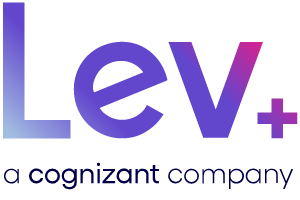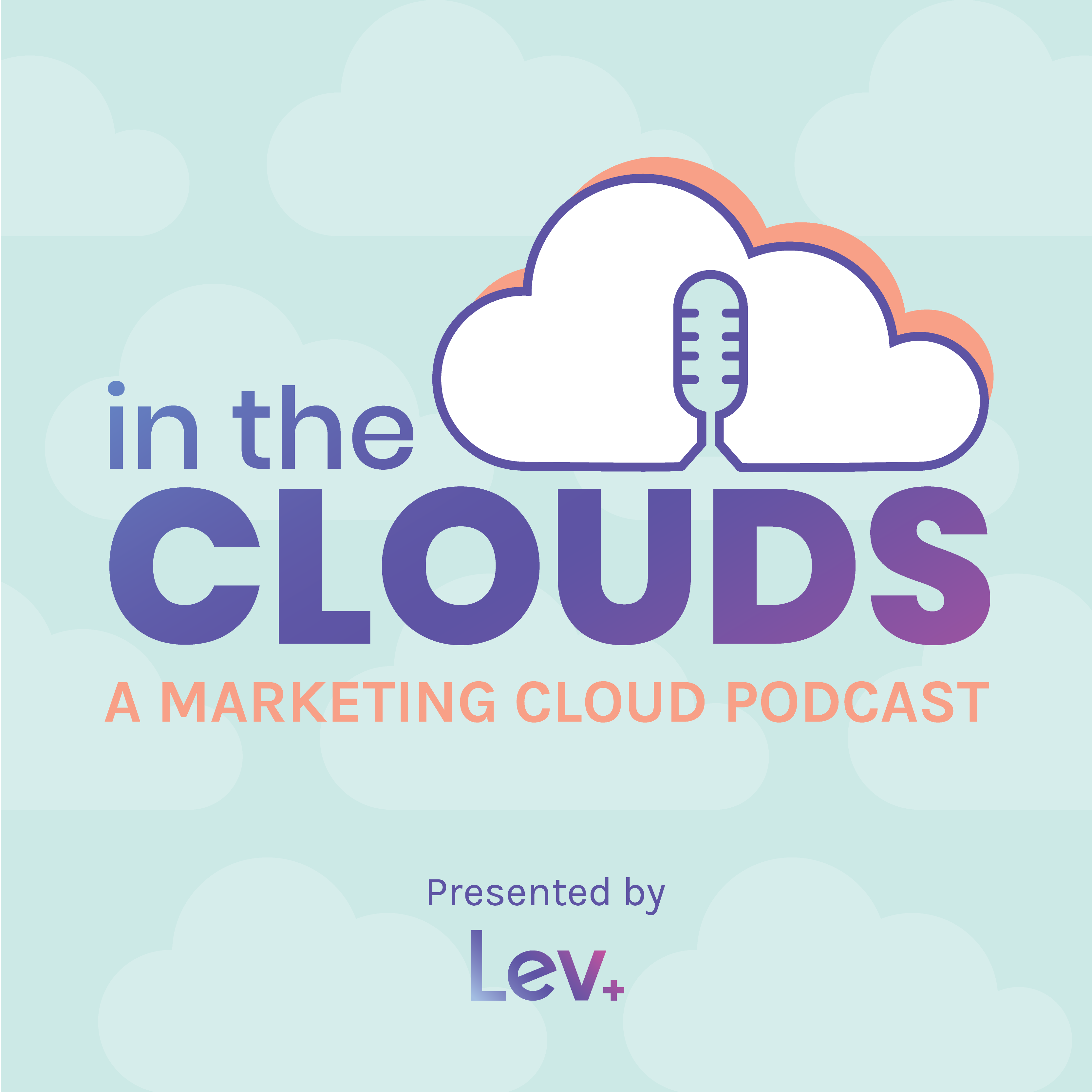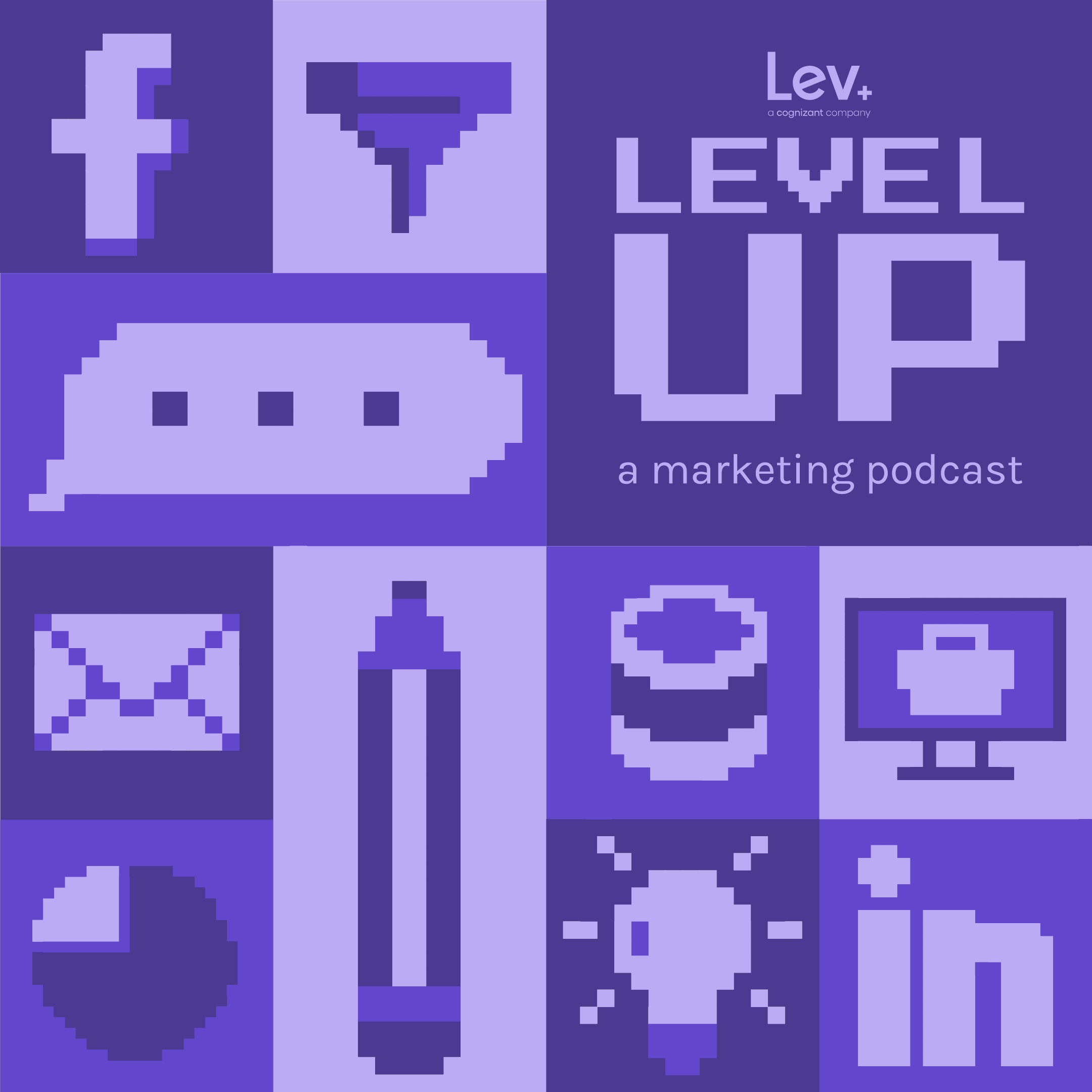Interaction Studio: Part 1
- 0.5
- 1
- 1.25
- 1.5
- 1.75
- 2
Intro: Welcome to the In The Clouds podcast. In The Clouds is a marketing cloud podcast powered by Lev, the most influential marketing focused Salesforce consultancy in the world. Lev is customer experience obsessed, and podcast host Bobby Tichy and Cole Fisher have partnered with some of the world's most well- known brands to help them master meaningful, one- on- one connections with their customers. In this podcast, they'll combine strategy and deep technical expertise to share best practices, how tos and real life use cases and solutions for the world's top brands using Salesforce products today.
Bobby Tichy: Welcome to the In The Clouds podcast. This is Bobby Tichy alongside Cole Fisher and Nick [Birdgraf. 00:21:45] Excited to talk to you guys today about Interaction Studio. Before we jump into it, just always a reminder, if you guys have topics or questions, you can email us @ inthecloudsatlevdigital. com. And then also, thank you for everybody who has subscribed and reviewed. I think we're at nine reviews now, so whoever gives us that 10th review, we'll give a special gift to. But anyway, excited to talk to you guys about Interaction Studio. This is actually going to be a two part podcast, so we'll start with really kind of covering what is Interaction Studio and really the basics of it, on this podcast. Next one, we'll jump into part two of some of the more technical elements of it and the strategy of implementing it and all of those different elements. I'm so excited to jump in. So Cole, if you wouldn't mind just first giving a brief introduction to Interaction Studio and what it is, especially as it relates to Salesforce inaudible clouds and things, that'd be great.
Cole: Yeah. So Interaction Studio is... What was prior called Thunderhead, it's been a product that's... It's very different than the normal suite of products for Salesforce. So Bobby, actually, this was probably a year and a half ago at connections. You originally had the opportunity to speak about Interaction Studio. And the whole thing was the customer journey, and the customer journey and what we're doing wrong. And it was about how we drop people into sort of predetermined static, linear journeys based on what we want them doing, rather than listening to them telling us what they want to do. Bobby, by the way, bailed on that and I ended up giving... Day of, finding out that I had to do it. But that was kind of the whole point of it is, we've had all this MarTech and all these best practices and things like that, about how we orchestrate the journey for the customers. And this is really the first iteration of something that's actually completely customer driven, even though we're building the use cases and defining that, or trying to define that for them, it's a lot more listening and reacting to what the customer wants in real time. So according to Salesforce, their quote onsite is Interaction Studio is something that is a tool, that essentially can visualize, track and manage customer experience. Real- time interaction management, driving valuable engagement at the right moment, just where your audience prefers. So broken down, what that really means is, this is real time interaction management. So this is the first time there's been a single layer cohesively across every channel. This is the first real omni- channel experience throughout the customer's life cycle touch points. And this provides the brand or the company, the ability to act and react to the customer's true intent wherever they are. So this isn't the first time where it's like, oh, they're on the site, they've abandoned something, now we can try to pull them into email. And this is more than that. It's where they are in mobile. It's brick and mortar. It's in stores, it's on sales and service calls. So this is the first time where we're actually seeing that interaction monitoring management and real time, serving the customer experience across all channels.
Bobby Tichy: There are two examples I always like to think of or bring up when people talk about Interaction Studio. One is, the casino example. So when working within the casino industry, the biggest element for them is, how do I keep people at the table for five minutes longer? And with one particular casino we were working with, they were saying that, if each person, each patron that came in, stayed an extra five minutes, that was equatable to$ 80 million in revenue for them over the course of a year. And so, as far as Interaction Studio is concerned, what they're able to do is, they're able to put the Interaction Studio tags on their casino slot machines. And as soon as I put my card in to recognize that it's me, if I take it out, I could get an immediate push notification or text message from this casino, giving me a$ 5 play credit, so I'll go back and sit down for another five minutes. Or it could be a free drink credit or something like that. So to your point, Cole, it's taking all of these different formerly disconnected channels and being able to bring them together. The other example I always like to think of too, is for sales and service. So with Interaction Studio, whether it's Salesforce as a CRM or use your own proprietary CRM, you can have a module within it that gives the next best action. So based on everything I've done on your website, every purchase I've ever made, every time I've walked into your store, I can see all those things and Interaction Studio, through AI, will give that service rep a next best action based off of that. So some really cool, powerful technology, for sure.
Cole: Yeah, absolutely. And so, that's being done, that's being powered by these sort of cross channel tools. So you've got your JavaScript snippet on your site, on web. You've got your mobile SDK, ad analytics for click throughs and things like that. And so, this is all coming back into marketing cloud, coming back into CRM. And so yeah, your sales and service agents, they know what the next product is that is most relevant to this person. Or they know what they've been looking at, or even what correspondences they've received and everything, all in one single glance, as the customer comes into the store or calls in with issues. So kind of the main value is, personalizing their experience, whether that's on web, mobile, anything like that, and being able to orchestrate that across all those channels. Sorry. Go ahead, Nick.
Nick: To that point, I think there's this common misconception, or maybe a lack of understanding about what IS is. We've really defined it, laid the groundwork of, hey, this is what it actually is. But I'm curious to, what is that common misconception? Because from what I can tell, people look at Interaction Studio/ Thunderhead, formerly Thunderhead, and see web personalization, real- time web personalization.
Cole: That's a really good call, because I feel like... And this is very true. That tends to be the number one go- to move, is like, oh, web personalization. Somebody clicks through an ad, they want this type of product, I'm going to serve the banner, or I'm going to personalize the web just to what that is. And that really is a very handy use case, but also, it's very narrow in its scope. And there's a lot of misconceptions around what Interaction Studio is or does. It's got really great analytics. So if you've actually seen where you and the customer have actually plotted out the life cycle stages before, and it shows where people are coming in, where they're dropping out, where they're moving forward or moving back in that life cycle. Because we know that personas are one thing, lifecycle stages are another thing, but none of those are static. They're always dynamic. They're always changing. One person in a single persona is going to change or their interests will change over time or their needs will change once they've converted on certain products and things like that. Or if nobody really follows the same life cycle. We don't really go from like awareness to acquisition, so on and so forth. That doesn't really ladder step in perfect form like that. Usually, you drop back and you do a little more research or you found a competing product, and so, you go into the education phase and things like that. And so all of that changes, and so this has really cool analytics to map that out. And so a lot of people get really excited about the analytics, like, oh, I just want to implement this and learn about my customer. And then what they find is, if you've never really established the KPIs of what you want to do, well, now you just have a bunch of analytics that you really can't tie the value to what you got out of that. And so it's not really analytics, it has great analytics, but it's not analytics tool. And so that's one of the big things, and it's also different from the products out there, I think, because we will ask about Adobe test and target and, those types of other competing products. And this is really based on the individual persona basis or the individual person basis rather than their persona. Products like that, are doing Adobe test and target. They're looking for a single persona and I define this static group as this persona, then I can activate this. But this is entirely based on the individual, so it's always different for whatever that individual is doing.
Bobby Tichy: So I'm able to take all of the data from all of these different places that I tag or that I'm collecting data, that all comes into the Interaction Studio as an engine, let's call it, and then from there I'm able to... We always talk about the phrase, the right message at the right time on the right channel, and I think that this really... Interaction Studio eptomizes that specifically, because what we're able to do then, is have interactions as this hub and then call out to whatever it might be. So obviously, there's pre- built connectors into marketing cloud specifically, but I could also call out to another SMS provider, for example, or my proprietary CRM at these important points in time where I have information that's valuable to me.
Cole: Yeah, absolutely. And that's being done as well by... We may have a JavaScript, somebody raises their hand, we identify them, but they're on another device or they're on mobile or something like that. Or they're in the app and we may not know who that person is. And then slowly over time, we're marrying those profiles and getting all this really rich data about them, and just serving that across the board. But I think there's also confusion too, as to how Interaction Studio plays with the other products in the suite. What does it replace in Salesforce? What does it compliment? And so I think there's some misconceptions around that. It cooperates really well with journey builder. The two of them kind of, as they coincide, Interaction Studio is really more based for inbound and offline orchestration, the ability to touch point with service and sales, with actual brick and mortar, with direct mail, things like that. It's reactive in real- time and it's also individual customer centric, where it's more focused on the insights around the customers, where journey builder is more focused on the type of engagement and sending out those outbound messages. So the two compliment each other really well. One of the things that I do hear a lot is that, personalization builder or brick of intelligence inaudible or whatever, however far back you want to go with that timeline, is supposed to be replaced by Interaction Studio. And that's not really the case. They're very different Interaction Studio can... There's kind of this VIN diagram, where Interaction Studio can do abandonment triggers, but if you're really using it to its full potential, you're probably tying that into more omni- channel, like push notifications and things like that. When somebody leaves the app with something in the cart or something like that, you can send them a push. Or if they're more responsive on mobile, you may send them a push if they've left something in the cart on the site. And you have those profiles tied together. And so, there's really rich use cases for that abandonment, but what it's not doing necessarily is that product or content, catalog management and recommendation and things like. That for it to do that... It can do that, but it would be a very heavy lift and you would basically be teaching it to do what personalization builder already does with Einstein. Now it can also compliment that and talk about the affinities or the current persona and things like that and when, and how those recommendations should be served. But serving up those actual recommendations itself or moderating that entire product catalog, is something that you probably don't want Interaction Studio doing, because that's going to be a very heavy data lift for Interaction Studio to do that.
Nick: I think there's something to be said too, about Interaction Studio doesn't really replace any tech that a company would have, right? Because the processes, the manual processes and APIs that would go into triggering this kind of cross omni- channel experience, I can't imagine that there's any customer that we've worked with, that they've had something in place across different channels to mimic Interaction Studio, just because the engineering behind the Interaction Studio is so deep on so many different levels. And chasing down through the DIP of, hey, this is my unknown user, now it's a known user. And then really just building out that life cycle propensity that's, to your point, customer driven.
Bobby Tichy: And I think that the only, in our scenarios, where we've seen people take away tech debt, is when they have implemented something similar, like a red point for example. But really, as we got into it, we realized that even solutions like red point are not doing everything that Interaction Studio is capable of doing. And so it's an extremely powerful tool, and that's why as we get to the next episode, part two, it'll be really good to talk more about the strategy, what implementation looks like, and those sorts of things. Just to quickly... We talked about it being omni- channel and we talked a little bit about the data side of it too, but the also element, just to pull up home is, it's truly real- time interaction management. So as things are happening in true real time, we can react to them in certain ways or however we might want to. And so, as those different things are complimented by marketing cloud, like Cole mentioned earlier with journey builder, I can put it in an Interaction Studio activity in my journey, but at the same time, I could use Interaction Studio to kick off a journey or to end the journey for someone in particular. So there's a lot of really cool use cases for it as we dive into it. So hopefully, that's a good overview of Interaction Studio and just what it is as a product. Like we said, in part two, we'll dive into more of the strategy around it, the implementation elements as well, so stay tuned for that. But before we leave, and completely unrelated, worst job.
Cole: Worst job you've ever had.
Nick: Do you want to go first, or do you want me to?
Cole: You go ahead.
Nick: I'm embarrassed by this one.
Cole: This should be good then.
Nick: My wife doesn't know this story.
Bobby Tichy: Yeah.
Nick: She does now. She will. I think she'll also hear our 10th review. It's going to be scathing one. So junior year in high school, I had a girlfriend that worked at the Abercrombie kids and I already had a job, but to spend more time with her, I took another job working on the weekends at Abercrombie kids. And I lasted a month and I only bought one outfit, but-
Cole: And it took your whole paycheck, right?
Nick: Exactly. To be one of those guys that was an Abercrombie worker, oh man, I look back at that as the worst job.
Bobby Tichy: So you were working at Abercrombie kids, did you buy an outfit from Abercrombie kids?
Nick: No. I had to go upstairs, to the adult store. inaudible
Cole: I worked a job, also junior year of high school, and it was-
Nick: Abercrombie kids?
Cole: I wish. That would have been a lot easier. I was basically a handyman in the schools that was entirely... It was myself and one other guy, that we were entirely responsible for removing and redoing the floors in all the classrooms. And so it was peeling up old linoleum or dirty old carpet that's been down for 50 years, that has biology class dissected frog scent on it. And then relaying carpet. And so, you're either... We had, essentially, razorblades on sticks, and we're scraping up old, 50 year old glue all day. Super manual labor. And then after that, you were just down on your knees, combing through the carpet glue, putting it all over it and just slowly rolling it down And if you screw up the floor, it's just so blatantly obvious. When you're 17, what don't you screw up? So I was like, I'm doing and redoing all this. I mean, it was just... And it was every day. We would start at five in the morning and then go to two or three in the afternoon. And then I'd have cross- country practice right after that, so I'd have to go and run eight miles after that, after a long day of work.
Bobby Tichy: After inhaling all that.
Cole: Yeah.
Nick: Bobby, you've done a bunch of renovations, what's that bad stuff called? Carcinogen? Do you know what I'm talking about?
Bobby Tichy: Was it mesothelioma or something like that?
Nick: No, no, no.
Cole: [crosstalk 00:18:30].
Nick: The common one, where they get on the suits and remediate it all.
Bobby Tichy: Asbestos?
Nick: Asbestos. There you go.
Cole: Usually that's ceiling related. Yeah. So, I mean, I'm sure-
Nick: I'm pretty sure it's in tile.
Cole: I'm sure I got some of it, but. And then there was one day where we just didn't have any, or one week where we didn't have any work to do. The schools didn't have anything. Oh, by the way, all schools shut off their AC in the summer.
Bobby Tichy: Oh, really?
Cole: If they don't have classes, they're shutting off their AC. So we're only going to the schools that don't have summer school classes. And I mean, it's just 90 degrees at best, sweltering heat. It's just awful. And then there was one day where our boss, the guy that owned the company, had two of us, he's like," Oh, we don't have work." I was like," Yeah. All right, we've got the week off. That's great." Hang out with my friends. inaudible come up to my place, and you just walk this half mile road and just chop all the trees down that are within 10 feet of the roads. crosstalk Oh, blistered, delirious didn't have any water. Just chopping trees down, everything. I mean, chopping trees down is bad enough, doing it for a half mile, it's just like... It's just awful.
Bobby Tichy: That's awful. I think there are two in the running. One is, I was at my first job. I was 14. I was a basketball referee at a boys and girls club-
Cole: Oh yeah, I had that too.
Bobby Tichy: Yeah.
Cole: Did you like that?
Bobby Tichy: You'd think it'd be fun-
Cole: Until you get torched by a parent.
Bobby Tichy: Exactly. So you're reffing five or six year olds, they can barely dribble the ball and the whole entire time you have these parents calling out these basketball fouls or violations that... They're five or six, the kid's traveling, he can't just [crosstalk 00:20:19].
Cole: They're all traveling.
Bobby Tichy: They're all traveling, all the time. And then at times there would be, where all 10 kids are in the lane, right? And they're just trying to score, they get a rebound-
Cole: And you get the one dad who's counting down a lane violation.
Bobby Tichy: Yeah." Three seconds. Three seconds." Oh boy. Another bad one was, I had a great job at a watch shop and for some reason, I always wanted to work at a golf course, but I could never get a job at a golf course. Finally, I did. I was 20 or something. And so I leave this great job at the watch company. And I go there, I lasted a week, because it had just rained and then it got a little cold, so all the driving range golf balls had gotten into mud and they wouldn't come up with the golf cart that goes around to collect them. So they're like," Actually, I know this isn't a great job, but would you mind going out there and picking up all the range balls out of the mud?"" I guess." So I didn't last very long. So I asked for my old job back at the watch company, and this is classic, my manager at the watch company, my first day back... Because anytime you get there, you're there by yourself. The night before, she had planted all of these big golf balls all around crosstalk So I got in the first day, there's probably 100 golf balls sitting there.
Cole: Oh, that's great.
Bobby Tichy: It was great, so. Well, thanks guys for listening. Again, next podcast will be part two of Interaction Studio and we'll also be diving into the strategy and implementation elements there. So again, reach out to us intheclouds @levigital. com. And we'll talk to you soon.
DESCRIPTION
Customer engagement has become an essential for marketers but finding tools to effectively manage customer experience can be tough. In this episode of ‘In the Clouds’, Nick Burgraff joins hosts Bobby Tichy and Cole Fisher to discuss Interaction Studio and how it can help marketers drive valuable customer engagement. In this episode they’ll be discussing:
- What is Interaction Studio?
- How Interaction Studio Works
- How Interaction Studio Differentiates and Cooperates with other Salesforce products
- Implementation
- How much it costs
And stay tuned for this episodes ‘Completely Unrelated’ topic: What was your worst job? You don’t want to miss the answers of our be-lev-ed hosts!



